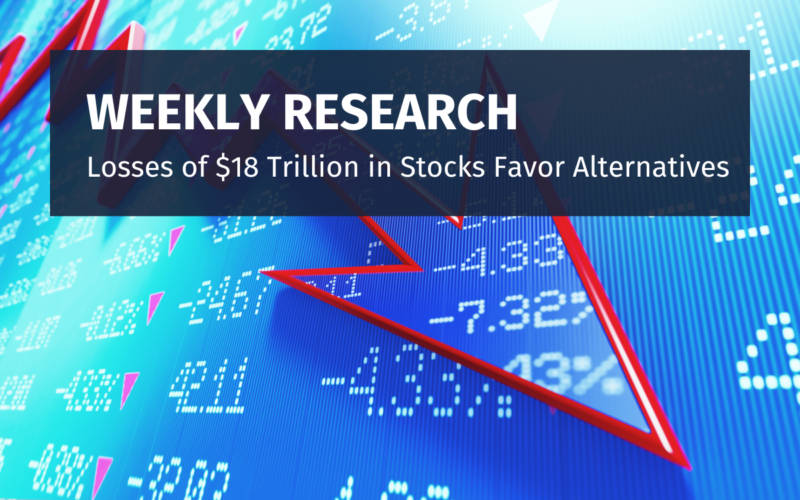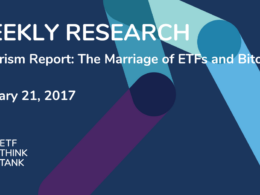U.S. ETF Asset Growth
In 2019, the year-to-date 31% U.S. ETF AUM growth rate symbolically came close to matching the index performance of the S&P 500 index (technically 30.67% vs. 31.49%). What a fitting way to conclude the last decade of evolutionary growth in the ETF industry. Investors have clearly bought into the evolution which, at the conclusion of the year also surprised many with inflows into fixed income at $135.4 billion exceeding $130.2 billion in equities. Aggregate inflows totaled $326.3 billion, second only to the $476.1 billion in 2017.

Softness Continues in Open To Close Ratio
As of December 31, 2019 there were currently 2,302 ETFs listed in the U.S – down 8 from the prior month. The 12-month trailing number of new launches declined further from last month at 239 to 233, down from 264 since our July 2019 report. This decline reflects that investor choice and ETF innovation may be maturing. The number of closures was at 151 which leads to a 1.54 open-to-close ratio (233/151). The news about Invesco projecting to close 42 ETFs in the first half of 2020 could lead to an open close ratio that finally goes below 1, but such a data point would only signal a short term statistical imbalance.
Fixed Income ETF Growth Accelerating
As of December 31, 2019, U.S. ETF assets were $4.418 trillion, an all-time year-end high. While the record books settle on whether fixed income flows overtook equity flows, it is important that this data point be put into context. Equity ETF AUM is 59.9% of the aggregate ETF AUM and fixed income ETF AUM is 18.3%. Meaning, at year-end 2019, equity AUM was $3,428 billion and fixed Income AUM was $808.8 billion. The fact that inflows were so close signals that the breadth of ETF usage is increasing. Further to the point, the $135.4 billion in inflows into fixed income is a 54% increase over the $87.8 billion that came in 2018.
The “average ETF ownership influence score” remained static at 7.50%, reflecting flows toward fixed income. The ownership influence score is the average amount of the market cap of every U.S. stock owned by ETFs.
Revenue Grows to An All Time High
The average weighted expense ratio for U.S. ETFs remains steady at 0.19%. However, due to increased assets, the 12-month projected revenue from expense ratios has increased to a new high of $8.24 billion, up 20.6% from $6.83 billion in December 2018.
The revenue also continues to diversify away from low cost, traditional beta and toward nontraditional passive “smart beta” ETFs and active ETFs. The percentage of ETF revenue from non-traditional passive ETFs as of December 31, 2018 was 36.38%; today it is at 38.75%. Active ETF revenue also gained market share, growing from 5.11% to 5.78%. Traditional passive still representing 55.47% of revenues, but this is down from 58.52%.
Some investors are willing to pay for active share over traditional low cost or free beta to either seek alpha or out of principle. To that point, using the ETF Think Tank Classification Tool, it is worth noting that the aggregate ESG Equity category with $15.6 billion in AUM charge an average of 38.5 bps while thematic ETFs with AUM of $65.9 billion charge 63.1 bps. Of course, seeking alpha by investing in thematic and or ESG ETFs are not necessarily mutually exclusive goals. For those who seek to manage their portfolio expense line in terms of active share this tool along with the SmartCost™ Calculator are Apps offered in the ETF Think Tank that help to quantify the cost of Active Share.

The Coming Decade
ETF AUM growth should not be expected to be linear at 31%, but over the next decade investors who embrace change will be excited by the access that ETFs provide as an optimizing low-cost solution. Forecasts of AUM growth to $30 trillion by the year 2030 makes for great headlines and savings for investors, but we hope that client-centric advice remains valued at a premium. Knowledge and experience take time.
| TETF.Index Performance |

| Returns as of January 10, 2020. Inception Date: April 4, 2017.Index performance is for informational purposes only and does not represent any ETF. Indexes are unmanaged and one cannot invest directly in an index. Past performance is NOT indicative of future results, which can vary. |
| TETF.Index Performance vs. Leading Financial Indexes |
| Click here for information on the Index following the ETF industry |












